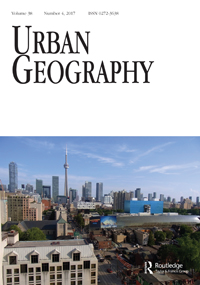|
|
Megaurbanization and Industrial Relocation in Mexico's Central Region Adrián Guillermo Aguilar Vol. 23 | Núm. 7 | 2007 Cítese como: Aguilar, A. (2002). Megaurbanization and Industrial Relocation in Mexico's Central Region en Urban Geography, 23(7), pp. 649-673. |
|
ABSTRACT Recent changes involving Mexico City, the main metropolis in Mexico and one of the world’s largest megacities, are a slowing demographic growth and the relocation of industrial activities from the city proper to other cities in the Central Region. One of the important features of this process is the extension of existing location economies for manufacturing industries from the strictly urban, or metropolitan scale, to a somewhat more regional level. This paper argues that this territorial restructuring is highly influenced by four main processes: (1) a spatially selective industrialization where a few cities, rural areas and economic corridors are emerging as industrial locations; (2) accessibility and transaction flows where the main road network and commodity flows determine the primary urban structure and the formation of economic corridors; (3) a concentrated pattern of foreign investment that shows a marked preference for the urban “core” and which reinforces its economic importance; (4) a territorial industrial specialization pattern whose main feature is a mixture of dispersion and concentration trends according to the type of manufacturing industry. Territorial restructuring in this region is an excellent example of an emerging spatial order associated to megaurbanization, with a rapid growth of nearby cities, a polycentric urban pattern, and the arrival of manufacturing industry in selective sites. However, this process seems to reinforce current intraregional inequalities, as the places with the best economic advantages tend to receive larger investments.
Mexico City, megaurbanization, industrial location, territorial restructuring
|






